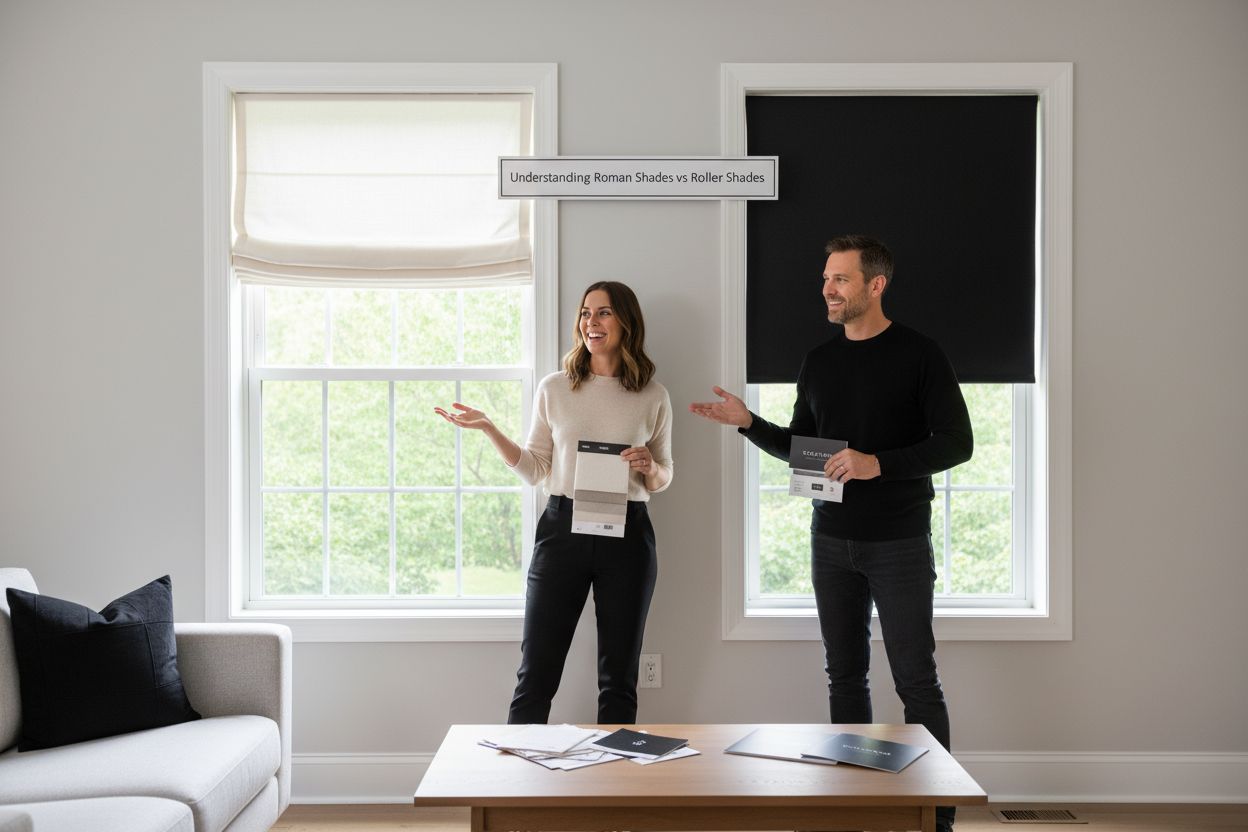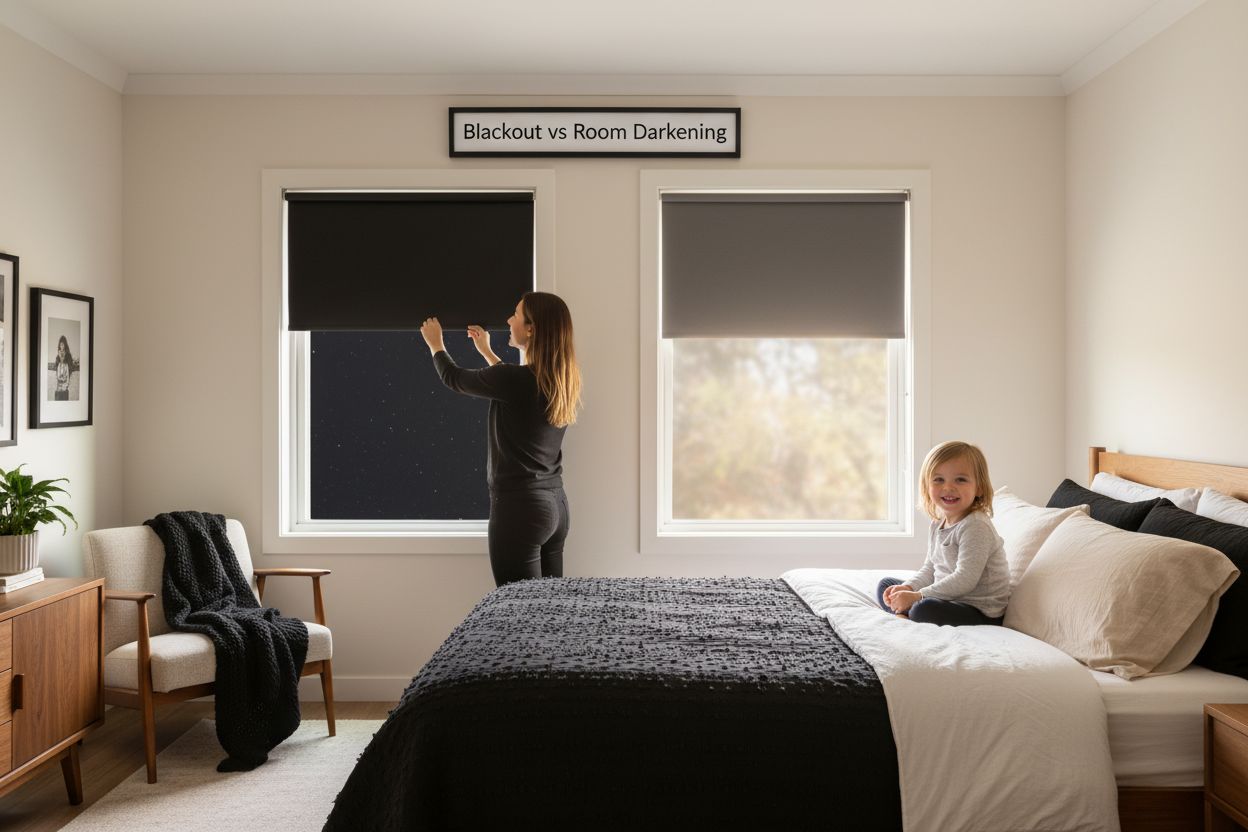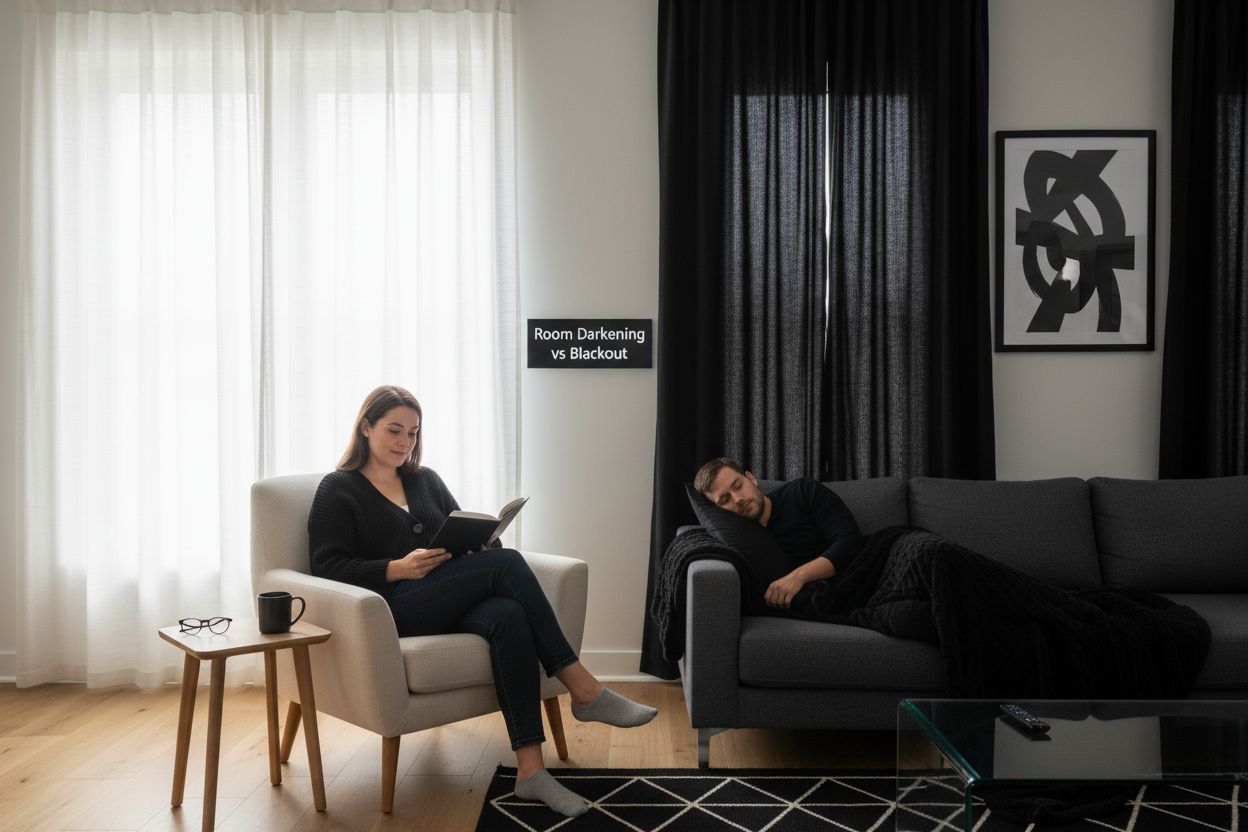
Understanding Room Darkening vs Blackout: Key Differences
Everyone wants the perfect balance of light and privacy at home. Some window treatments promise to keep your space dim, while others claim to block every last ray. But most people don’t realize that the difference is huge. Room darkening shades usually block 50 to 80 percent of light, while blackout options can stop up to 100 percent. That means choosing the right treatment actually transforms how your whole room feels and functions.
Table of Contents
- Defining Room Darkening And Blackout Treatments
- Why Room Darkening And Blackout Matter For Homes
- How Room Darkening And Blackout Function
- Key Differences Between Room Darkening And Blackout
- Choosing Between Room Darkening And Blackout Solutions
Quick Summary
| Takeaway | Explanation |
|---|---|
| Room darkening offers partial light reduction | Ideal for spaces needing subdued light, allowing 50-80% light filtration for comfort and ambiance. |
| Blackout treatments eliminate nearly all light | Perfect for bedrooms or media rooms, blocking 99-100% of light for complete darkness and optimal sleep conditions. |
| Light management affects sleep quality | Effective window treatments can significantly improve sleep by blocking disruptive light sources, benefiting health and well-being. |
| Energy efficiency enhances indoor comfort | Both treatment types act as thermal barriers, reducing heating and cooling costs through improved temperature control. |
| Choose based on specific room needs | Assess each room’s function and light exposure to select the most suitable treatment for desired ambiance and privacy. |
Defining Room Darkening and Blackout Treatments
Window treatments play a crucial role in controlling light and privacy in interior spaces. When exploring room darkening vs blackout solutions, understanding their fundamental differences becomes essential for homeowners seeking optimal light management.
What Makes Room Darkening Treatments Unique
Room darkening treatments are designed to significantly reduce incoming light without completely eliminating it. Light filtering research reveals these treatments typically block 50-80% of external light, creating a softer, more subdued illumination environment. These treatments use tightly woven fabrics or specialized materials that partially obstruct sunlight, allowing a gentle ambient glow to permeate the space.
Key characteristics of room darkening treatments include:
- Partial light reduction with soft light penetration
- Moderate privacy protection
- Suitable for spaces requiring ambient illumination
- Typically more affordable compared to blackout options
Understanding Blackout Window Treatments
Blackout treatments represent the most comprehensive light elimination solution. These specialized window coverings are engineered to block nearly 99-100% of incoming light, creating near total darkness. Blackout treatments utilize dense, multilayered fabrics with special light blocking properties, often incorporating materials like thick polyester or specialized thermal linings.
Read more about understanding light filtering options on our comprehensive guide to explore additional nuanced approaches to managing interior illumination.
The primary distinction between room darkening and blackout treatments lies in their light reduction capabilities. While room darkening allows soft light transmission, blackout solutions create an environment of near complete darkness, making them ideal for specific contexts like home theaters, shift workers needing daytime sleep, or nurseries requiring optimal infant rest conditions.
Below is a side-by-side comparison table summarizing the main differences between room darkening and blackout window treatments as described in the article.
| Feature | Room Darkening Treatments | Blackout Treatments |
|---|---|---|
| Light Blocked | 50-80% | 99-100% |
| Ambient Illumination | Allows soft, subdued glow | Nearly total darkness, minimal light passes |
| Privacy Protection | Moderate | High/Maximum |
| Material Type | Tightly woven, medium-weight fabrics | Dense, multilayered, opaque fabrics |
| Best Use Cases | Living rooms, offices, shared spaces | Bedrooms, nurseries, home theaters |
| Energy Efficiency | Improves, but less than blackout | Highest efficiency due to full coverage |
| Affordability | Generally more affordable | Often higher priced due to materials |
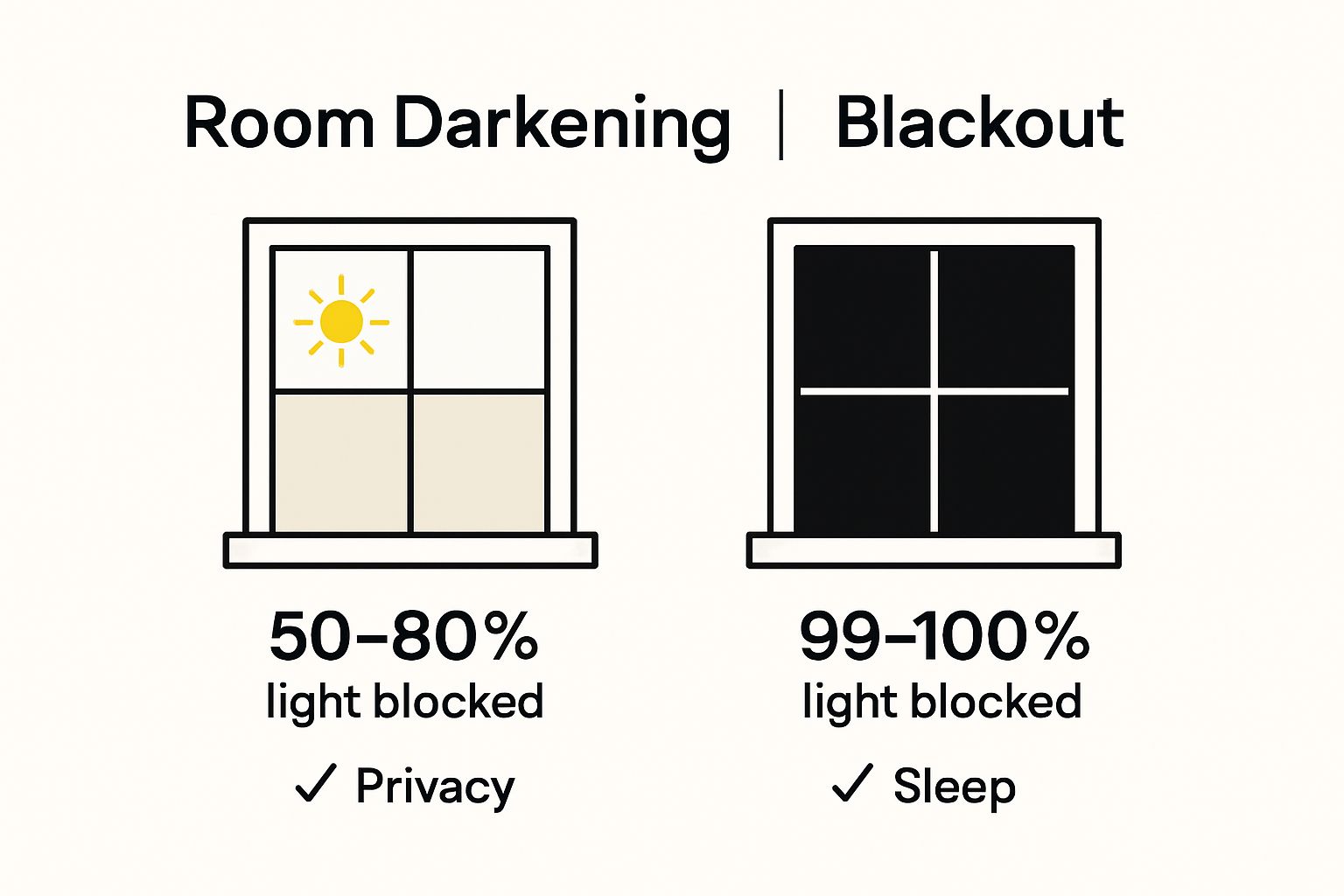
Why Room Darkening and Blackout Matter for Homes
Window treatments are more than aesthetic enhancements. They serve critical functional purposes that directly impact residential comfort, energy efficiency, and quality of life. Understanding how room darkening and blackout solutions contribute to home environments helps homeowners make informed design choices.
Health and Sleep Quality Considerations
Quality sleep depends significantly on light management. Research from the National Institutes of Health demonstrates that controlled light exposure profoundly influences circadian rhythms and overall sleep patterns. Room darkening and blackout treatments provide strategic solutions for creating optimal sleeping environments across various household scenarios.
Key sleep-related benefits include:
- Blocking disruptive street lights and early morning sunlight
- Supporting shift workers who need daytime rest
- Creating conducive environments for infants and children
- Reducing potential sleep cycle interruptions
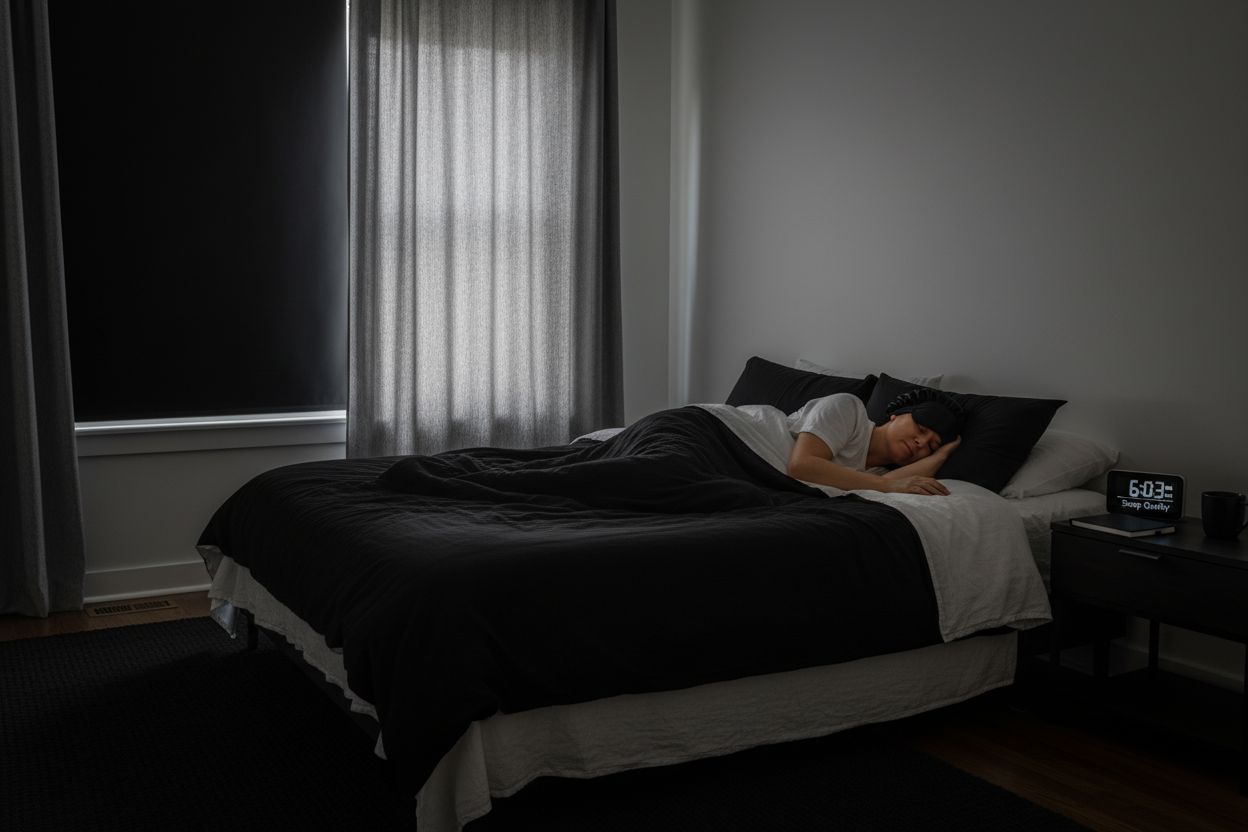
Energy Efficiency and Thermal Regulation
Beyond sleep considerations, window treatments play a substantial role in home energy management. Advanced energy research indicates that strategic light blocking can significantly reduce heat gain and loss. Room darkening and blackout solutions act as thermal barriers, helping maintain consistent indoor temperatures and potentially lowering heating and cooling expenses.
Learn more about window treatments for privacy and energy management to explore comprehensive home comfort strategies.
Additionally, these treatments offer substantial privacy protection, creating personal sanctuaries within living spaces. Whether blocking exterior visibility in urban environments or reducing glare in home office settings, room darkening and blackout solutions provide flexible, functional advantages that extend far beyond simple window decoration.
How Room Darkening and Blackout Function
The effectiveness of room darkening and blackout window treatments hinges on advanced fabric technologies and strategic design principles that manipulate light transmission. Understanding their functional mechanics reveals the sophisticated engineering behind these essential home solutions.
Material Science and Light Blocking Technologies
Advanced optical engineering research demonstrates that light blocking capabilities depend on multiple interconnected factors. Room darkening and blackout treatments utilize specialized fabric constructions that interrupt light pathways through different mechanical approaches.
Key light blocking mechanisms include:
- Tight weave density preventing light penetration
- Multilayered fabric compositions
- Specialized coating technologies
- Precise fabric thickness and opacity
Fabric Composition and Light Transmission
Room darkening treatments typically employ medium-weight fabrics with high thread counts that partially obstruct light. These materials allow soft ambient illumination while maintaining substantial privacy. In contrast, blackout treatments incorporate dense, often thermally insulated fabrics engineered to block nearly 100% of incoming light.
Explore our comprehensive guide on light filtering window treatments to understand the nuanced technologies behind these innovative solutions.
The fundamental difference lies in their structural integrity. Blackout treatments use completely opaque materials or special light blocking linings, while room darkening solutions create a more filtered, subdued lighting environment. This technological approach ensures homeowners can select window treatments precisely matched to their specific light management requirements.
Key Differences Between Room Darkening and Blackout
Understanding the nuanced distinctions between room darkening and blackout window treatments helps homeowners make precise selections aligned with their specific light management requirements. While these solutions might appear similar, they offer dramatically different approaches to controlling interior illumination.
Light Transmission Performance
Scientific light measurement studies reveal critical performance variations between room darkening and blackout treatments. Room darkening solutions typically block 50-80% of incoming light, creating a softened, filtered environment. Blackout treatments, by contrast, eliminate 99-100% of external light, producing near total darkness.
Key comparative performance metrics include:
- Percentage of light blocked
- Ambient illumination levels
- Interior visibility management
- Privacy protection intensity
Practical Application Scenarios
The selection between room darkening and blackout treatments depends on specific residential and professional requirements. Room darkening solutions excel in spaces requiring moderate light control, such as living rooms, home offices, and areas with partial sunlight exposure. Blackout treatments become essential in environments demanding complete light elimination, including nurseries, home theaters, shift workers’ bedrooms, and media production spaces.
Learn more about selecting the right window treatments for your home to understand how different solutions match unique interior design needs.
Ultimately, the choice between room darkening and blackout treatments transcends simple aesthetic preferences. These specialized window solutions represent sophisticated engineering designed to provide precise environmental control, enabling homeowners to customize their interior lighting experiences with unprecedented accuracy.
Choosing Between Room Darkening and Blackout Solutions
Selecting the appropriate window treatment requires careful consideration of individual needs, room functionality, and specific environmental requirements. The decision between room darkening and blackout solutions extends beyond simple light control, encompassing factors like energy efficiency, privacy, and interior design aesthetics.
Evaluating Room-Specific Requirements
Energy efficiency research highlights that window treatments significantly impact residential thermal management. Different spaces demand unique light control strategies, making the room darkening versus blackout selection crucial for optimal comfort.
Key considerations for selecting the right solution include:
- Specific room function and daily activities
- Natural light exposure and window orientation
- Desired privacy levels
- Interior temperature regulation needs
Lifestyle and Comfort Factors
Room darkening treatments work best in shared living spaces, home offices, and areas requiring soft ambient lighting. They provide moderate light filtration while maintaining a connection with exterior environments. Blackout solutions become ideal for bedrooms, nurseries, home theaters, and spaces demanding complete light elimination, particularly for individuals with irregular sleep schedules or sensitivity to external illumination.
Explore our comprehensive guide to bedroom window treatments to understand how different solutions enhance sleep quality and room aesthetics.
Ultimately, the choice between room darkening and blackout treatments reflects personal preferences, functional requirements, and the unique characteristics of individual living spaces. Homeowners should prioritize their specific needs, considering factors like light sensitivity, sleep patterns, and interior design goals when making this important decision.
This table outlines key criteria to help you determine whether room darkening or blackout window treatments best fit your specific needs, based on details discussed in the article.
| Selection Criteria | Room Darkening Recommended | Blackout Recommended |
|---|---|---|
| Desired Light Level | Soft, subdued/filtered light | Total or near-total darkness |
| Typical Room Function | Living room, home office, shared spaces | Bedroom, nursery, home theater, shift work |
| Sleep Sensitivity | Mild/moderate | High (light-sensitive or shift sleepers) |
| Privacy Requirement | Moderate | Maximum |
| Energy Efficiency Focus | Standard | High (extreme temperature control) |
| Affordability Priority | Yes (typically lower cost) | No (higher investment is required) |
Find Your Perfect Room Darkening or Blackout Solution Today
Struggling to balance privacy, energy efficiency, and the right amount of natural light in your home? Our article highlighted how choosing between room darkening and blackout window treatments can feel overwhelming, especially when each room has its own needs and every product claims to offer the best solution. At Value Blinds, we recognize how easy it is to make the wrong choice with so many options out there. That is why our Best Sellers collection features window coverings designed to give you full control of your light environment.
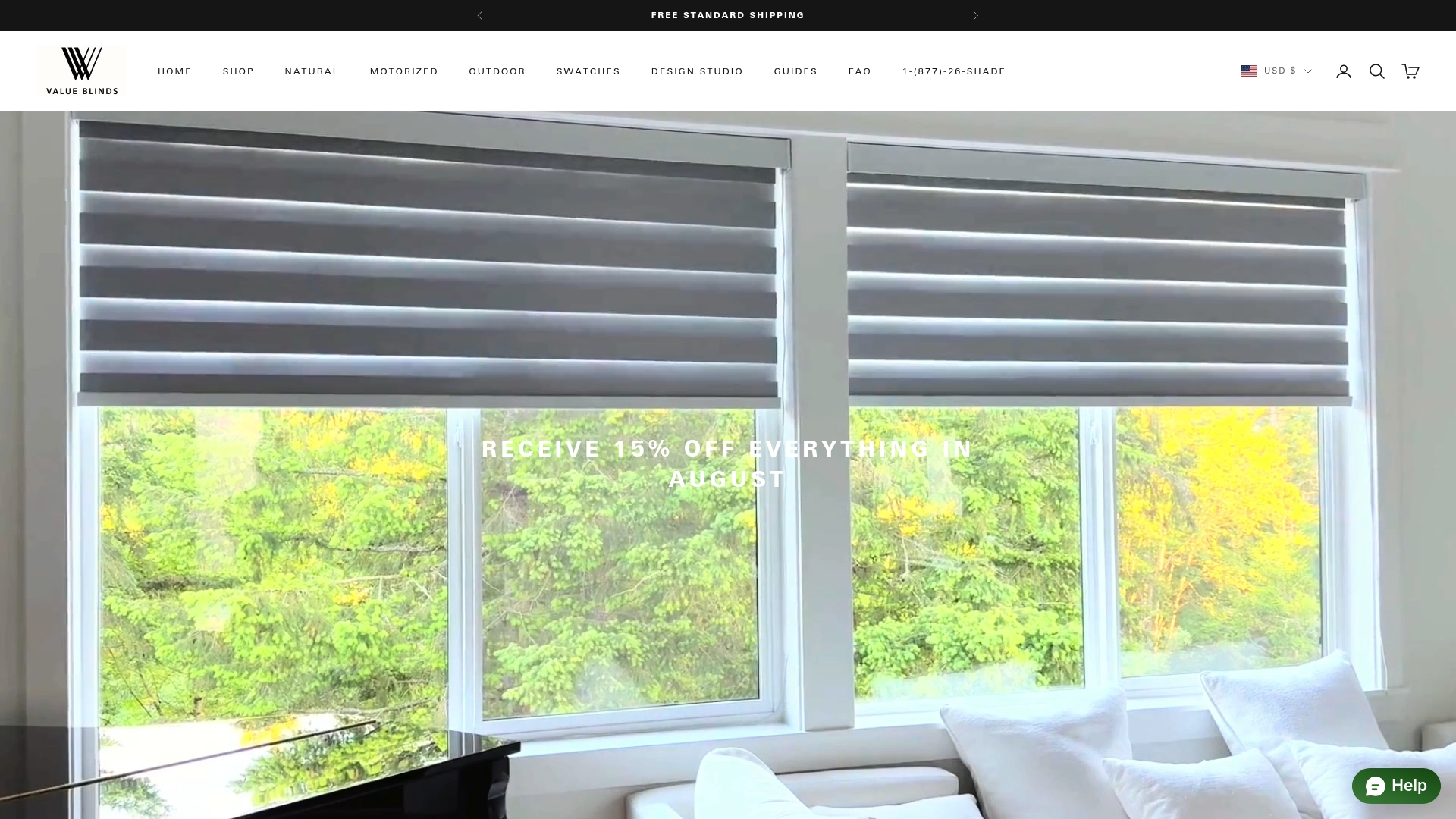
Ready to transform your living space with custom window treatments that truly fit your needs? Start by exploring real customer favorites or dive into our full selection at Value Blinds Direct. You can experience peace of mind with our quality guarantees and expert support. Discover smarter, energy-efficient shades and order your free swatches now so you can feel the difference for yourself.
Frequently Asked Questions
What is the main difference between room darkening and blackout window treatments?
Room darkening treatments significantly reduce incoming light but do not eliminate it entirely, blocking 50-80% of external light. In contrast, blackout treatments block nearly 99-100% of incoming light, creating almost total darkness. Consider your specific light control needs before making a choice.
In what scenarios should I use room darkening treatments?
Use room darkening treatments in shared living spaces, home offices, or rooms where you want to control light while still allowing some ambient illumination. These treatments provide a softer light experience, making them suitable for areas with moderate light needs.
When are blackout treatments the best option?
Blackout treatments are ideal for bedrooms, nurseries, and home theaters where total darkness is required for optimal sleep or viewing experiences. If you often work night shifts and need to sleep during the day, blackout curtains can help create the necessary dark environment.
How do room darkening and blackout treatments affect energy efficiency?
Both room darkening and blackout treatments can improve energy efficiency by reducing heat gain and loss. By blocking sunlight, these treatments can help maintain consistent indoor temperatures, potentially lowering your energy bills by around 20%.
How do I determine which window treatment is right for my needs?
Evaluate your room’s purpose, the amount of natural light it receives, and your privacy requirements to decide between room darkening and blackout solutions. For spaces requiring minimal light control, opt for room darkening; for complete light elimination, choose blackout.
Can I combine room darkening and blackout treatments?
Yes, combining both treatments can offer flexibility. For example, you might use room darkening shades during the day for ambient light and add blackout curtains at night for total darkness. Assess the lighting throughout the day to tailor your approach effectively.


